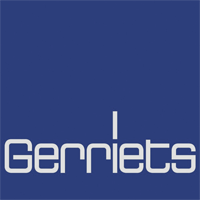24 gerriets.us | 800-369-3695 | info@gerriets.us
THE DIFFERENCES BETWEEN FRONT AND REAR PROJECTION
Front Projection
The method of bouncing or re ecting light off the front surface of the substrate. Light sources can be from a projector, traditional lighting xture (ellipsoidal's, fresnel's, parcan's) or from intelligent moving lights. The light source and viewer are on the same side of the screen, thus the viewer is looking at re ected light. Matte-white front projection screens are typically designed to evenly maintain image brightness, clarity and contrast across its surface. High-Gain front projection screens (gain value of over 1.0) typically are brighter on center axis than matte white screens and fall off (lose brightness and clarity) at the sides. As with both front and rear projection, controlling ambient light (all light in the space produced by sources other than the screen) will be crucial when trying to maintain image brightness.
Advantages of Front Projection No need for projector placement behind screen. Bright, evenly illuminated screens.
Disadvantages of Front Projection Large, light colored surface attracts ambient light. Shadows can be cast by performers and/or scenery. Typically brighter projectors needed when other lighting is on stage
(ambient light) at same time projection is on.
[projection screens]
